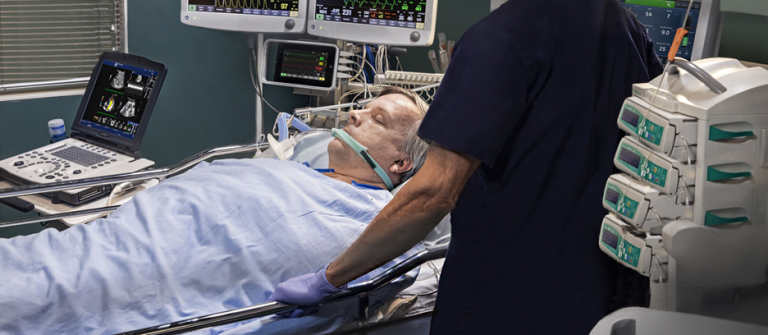
Staff members follow careful cleaning regimens based on recommendations from the Centers for Disease Control and Prevention1 (CDC). They include:
- Designating a cleaning program manager.
- Assigning an equipment manager to keep a master list of supplies and proper cleaning procedures.
- Establishing and communicating expectations across the organization.
- Routinely inspecting and taking inventory.
The COVID-19 pandemic forced care organizations to go to even greater lengths to keep care spaces clean and sanitized: The level and frequency of cleaning and the attention to detail have become much more rigorous.
More thorough cleaning for the new normal
Here are three ways hospitals have cleaned care spaces and waiting areas during the pandemic to keep patients, staff and visitors as safe as possible:
1. Cleaning spaces daily
A report in the Health Cleaning Forum2 estimates that 50-70% of healthcare-associated infections (HAIs) spread through hand-to-hand contact. That leaves 30-50% of such infections likely arising from surfaces, devices, water and air. A 2020 study published in JAMA3 showed the impact of routine cleaning. In the isolation rooms of three COVID-19 patients, viral RNA was detected on nearly all surfaces, but after a routine cleaning, no viral RNA was found.
The CDC4 says once-a-day cleanings should suffice in most areas, but more frequent cleanings are advisable in areas with high traffic, poor ventilation, lack of access to handwashing or hand sanitizers, and occupancy by people at high risk of serious COVID-19 illness. While disinfection is not always required, any space in which a COVID-positive person was present should be promptly cleaned and disinfected.
2. Minding air quality
Before entering an area that had been occupied by a COVID-19 patient, the CDC5 recommends that cleaning staff wait for air changes so that aerosolized virus particles can be evacuated. This could take 10 minutes to more than 3 hours, depending on ventilation quality.
JAMA6 reported on a study in which some facilities used ultraviolet light and hydrogen peroxide vapor to disinfect potentially contaminated air. These practices were especially useful where COVID patients underwent procedures such as surgery and intubation, which can generate aerosols.
3. Using appropriate cleaners
The U.S. Environmental Protection Agency’s7 List N identifies disinfectants known to kill the COVID-19 virus on high-touch surfaces such as tabletops and chairs. Healthcare providers should use items from this list when cleaning surfaces and devices.
Most medical devices and accessories come with manufacturer-approved cleaning agents, or advice on which products to use, so as to avoid damage to the equipment. GE HealthCare went a step further, cross-referencing its recommended cleansers8 with List N, so that care facilities can choose agents that prevent both product damage and COVID-19 transmission.
Pandemic planning: Being prepared
While being more attentive to cleaning in the face of the pandemic, hospitals have also adopted policies and guidelines for staff to help contain the disease. For example, most hospitals allow only essential personnel to be in operating or treatment rooms. In addition, they make sure staff members in charge of cleaning always have personal protective equipment, such as gowns, face shields, and N95 masks.
New cleaning regimens can be demanding on staff, especially as patient loads rise and fall. However, cleaning is essential to preventing the spread of infection. As COVID-19 persists, increased vigilance and updated CDC guidance can help caregivers maintain safe care spaces staff and patients.
References
1 https://www.cdc.gov/hai/prevent/resource-limited/cleaning-programs.html
2 https://aricjournal.biomedcentral.com/articles/10.1186/s13756-018-0420-3
3 https://www.ncbi.nlm.nih.gov/pmc/articles/PMC7057172/
5 https://www.cdc.gov/coronavirus/2019-ncov/hcp/infection-control-recommendations.html
6 https://jamanetwork.com/journals/jama/fullarticle/2766821
7 https://www.epa.gov/coronavirus/about-list-n-disinfectants-coronavirus-covid-19-0








